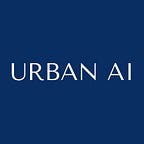Self-Repairing Cities: How AI is Streamlining Maintenance Operations at Scale
Headquartered in Singapore, H3 Dynamics’ customers span the public and private sector, facilities management firms, site operators, safety inspection and certification organizations, urban planners and architects, and regulators involved in legislating safety mandates.
What H3 Dynamics’ customers have in common are tall buildings and many of them — skyscrapers at scale in Asian megacities — where the majority of humanity now lives and works.
Singapore alone is home to 40,000 buildings higher than 25 floors, and the majority of its population lives in HDBs (Housing Development Board flats). Managing the state of this built environment at this kind of scale has now become a struggle.
Starting in 2016, H3 Dynamics worked closely with the leading agency in Singapore in charge of Smart Nation implementation — and launched H3 Zoom in 2019, a cloud-based platform that digitizes maintenance operation workflows — from professional inspections to repair monitoring as a continuous cycle. The H3 Zoom platform allows companies and governments to automate visual building inspections for greater accuracy and safety, but also manage repair work across the entire lifecycle of the structure, and the now digitized process is becoming more and more autonomous.
At first, the company focused on inspections — and developed a robust AI solution to support precise defect identification and geolocation, across large outdoor surfaces, namely building facades. But this first application evolved and went deep into the client operational processes.
Over the years, the solution evolved towards remediation management, gathering the existing community of repair contractors, certified professional engineers, and inspection companies onto one single platform which clients can monitor seamlessly.
The solution’s technology also evolved from external surface condition management on facades, to indoor unit inspection, safety monitoring, and energy loss detection.
The solution is giving access to several new layers of information on structures and buildings across cities. As such, organizations can track the physical condition of urban and remote facilities with a level of safety, efficiency, and accuracy not possible before.
Speed, productivity, and scale
Traditional inspection methods for high-rise buildings typically take several weeks or months, require expensive equipment rentals, and pose higher safety risks to people. Repair processes can take many months or even a couple of years — and this cycle is never ending. On inspection processes alone, H3 Dynamics customers have sped up building inspection processes by 80%, and increased productivity by up to 70 percent.
Drones and ground robots, as well as people, can capture information from buildings with video and other camera images, bringing this data into the H3 Zoom platform. The system uses technologies including AI and 3D modeling to create an interactive map that displays defects on the scanned structure surfaces, classifying potential risks, whether aesthetic anomalies or unsafe areas that require repair. Civil engineers or other recognized industry experts review and validate the automated findings, the system then generates a detailed interactive report that details safety risks, remediation advice, cost assessments for repair works, reach out to repair contractors, keep track of the quality of repair work and the contractors, and essentially keep track of the life of a building or thousands of buildings — an entire city — from one single pane.
Moving towards full automation and “self-repairing” cities
Ground robots are already in the buildings — cleaning floors and monitoring safety. Last year H3 Dynamics joined forces with Softbank Robotics, one of the world leaders in robotics applied to facilities management. Scanning activity using on-board cameras is a low-cost add on activity, with data reaching H3 Zoom’s cloud over Wifi or 5G networks as frequently as needed.
The cloud is agnostic to data acquisition methods. H3 Dynamics has recently partnered with Australian company Voltin which has launched its “Autobat” solution, a “drone on a rope” capable of avoiding drone use in tight urban spaces or highly regulated airspace environments.
Managing tens of thousands of buildings will require more automation in the coming years. As the demand for physical world data continues to grow beyond capacity to acquire it using current “human in the loop” methods, H3 Dynamics is also planning for a fully autonomous drone to cloud to ERP solution — using drone vertiports placed on building rooftops — capable of managing entire building clusters or districts. These vertiport networks will be able to connect to H3 Zoom to transmit the necessary scans for processing when needed — while giving drones other roles, such as package delivery and first response during road accidents for example. The company has already started installing such vertiport infrastructure in less urbanised environments, such as industrial sites.
Cloud powers global plans
H3 Dynamics has envisioned unlimited expansion opportunities beyond his current customer base in Singapore and South East Asia to the broader APAC and Middle East Region, Latin America, Europe, and the United States.
“We are envisioning how industries and cities can evolve in 10 to 20 years, which we are translating into H3 Dynamics’ autonomous service offering, and as a cloud-based company, we have no geographical boundaries.”
By Taras Wankewycs, CEO of H3 Dynamics
This topic will be discussed in-depth on October 18th with Taras Wankewycz, CEO of H3 Dynamics during a 1h open webinar. Link to register.
